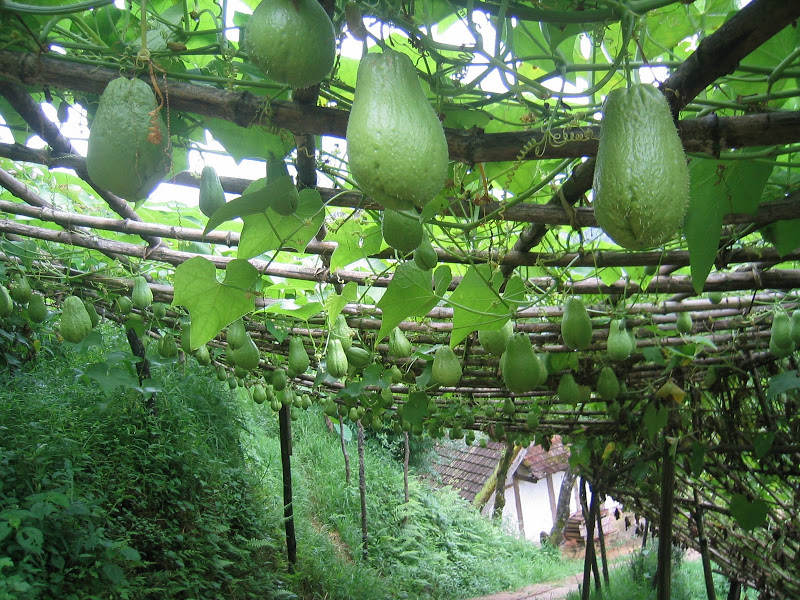
For generations, the people of O Quy Ho, a mountain village in Sapa District, have lived in harmony with endless hills of lush green chayote vines.
Like a gift from the earth, these vines climb and spread across the slopes, filling the land with vitality and becoming an essential part of local daily life.
Today, as Sapa has become one of Vietnam’s top travel destinations, O Quy Ho chayote — once a humble homegrown vegetable — has turned into a regional specialty beloved by both domestic and international visitors.
🌱 The Chayote Fields of O Quy Ho
O Quy Ho is known as the “chayote capital” of Sapa, with over 100 hectares under cultivation — about 80 hectares for fruit and 20 hectares for tender chayote shoots.
In the past, these vegetables were grown mainly for family meals and sold only at small local markets.
Now, thanks to rising demand, O Quy Ho chayote brings both economic and cultural value, becoming a signature of Sapa’s sustainable agriculture.
As tourism grows, locals are also developing “chayote tourism” — farm experiences where travelers can visit, pick vegetables, and enjoy freshly cooked dishes right in the garden.

❄️ Where the Climate Creates Flavor
Chayote thrives in Sapa’s cool mountain climate, producing fruits that are deep green, firm, and naturally sweet.
From the caring hands of the growers, each vine climbs skyward, heavy with glossy fruits.
Locals have created countless dishes from this versatile vegetable:
- Boiled chayote with sesame salt
- Stir-fried chayote shoots with garlic
- Chayote stew with pork ribs or chicken broth
Simple, pure, and delicious — these dishes are now staples on the menus of restaurants and hotels throughout Sapa.
Beyond the local market, O Quy Ho chayote is distributed widely to major cities such as Hanoi, Hai Phong, Bac Ninh, Thai Binh, and Nam Dinh, appearing in both restaurants and wholesale markets.
🌿 When Agriculture Meets Tourism
According to Mr. Nguyen Tien Thanh, Head of Sapa District’s Economic Office, the growth of local agriculture is helping drive eco-tourism in the region.
Visitors now come not only to see Ham Rong Mountain, Silver Waterfall, or Love Waterfall, but also to experience the unique beauty of chayote gardens along the O Quy Ho mountain pass.
The bright green vines cascading down the hillsides captivate many travelers — some can’t resist stopping, taking photos, or stepping into the gardens to pick vegetables themselves.
This spontaneous curiosity has become a natural form of tourism promotion, spreading the name of Sapa’s Clean Chayote far and wide.
🧺 Hoa Dao Cooperative – A Model of Green Farming
Among the pioneers, the Hoa Dao Cooperative manages over 50 hectares of chayote fields open to visitors.
The well-tended, long-standing gardens are always tidy and full of fruit, offering guests a refreshing view of mountain life and green abundance.
Ms. Do Thi Lien, the head of the cooperative, shared that they plan to expand into farm-based tourism, combining agricultural production with visitor experiences — a model still rare but full of potential in Sapa.
💚 A Future of “Chayote Tourism”
For the people of O Quy Ho, welcoming visitors to their gardens isn’t just about business — it’s about sharing joy and pride in the fruits of their labor.
Each handshake, each smile exchanged among the vines reflects the warmth and hospitality of the highland people.
In the near future, O Quy Ho is expected to become a vibrant eco-tourism destination, where travelers can walk among chayote trellises heavy with fruit, breathe the pure mountain air, and discover the simple beauty of Sapa’s green life.
📍 Visit the Chayote Gardens of O Quy Ho
O Quy Ho Valley, Sapa District, Lao Cai, Vietnam
📧 cuisinesapa@gmail.com | ☎️ +84 964 267 569
Experience the taste of Sapa’s clean, organic chayote — straight from the mountain farms to your plate.
